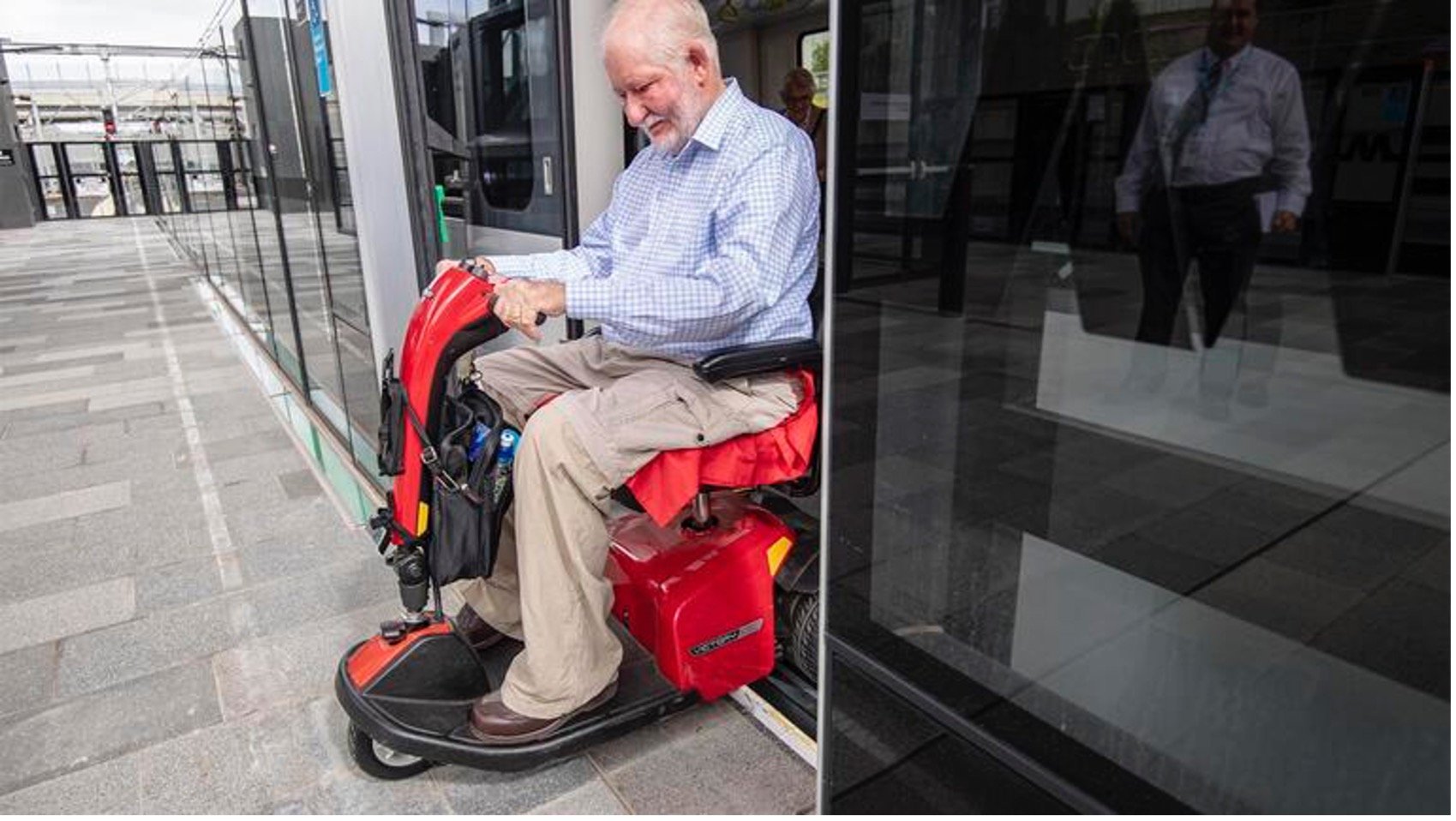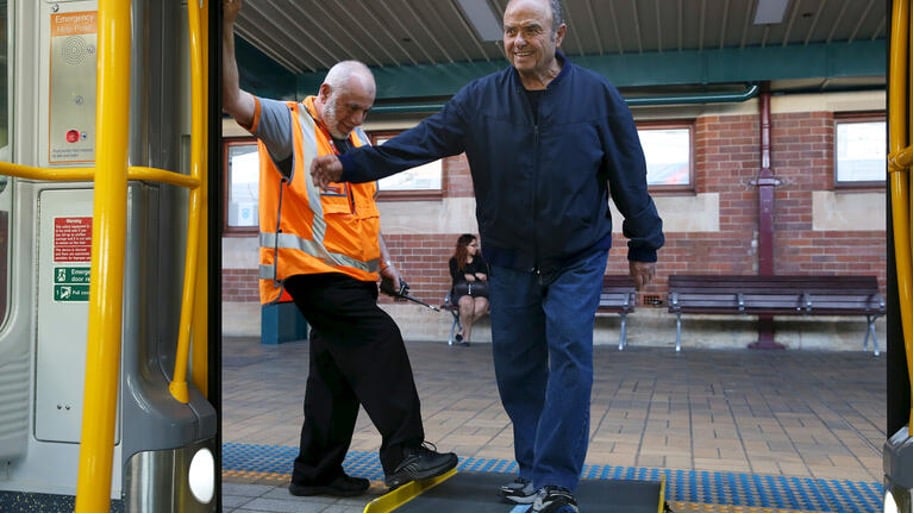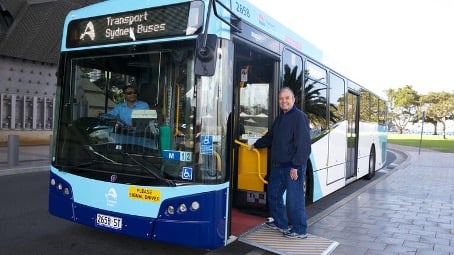When Covid-19 hit the world, most jobs involved significant changes and mine, was equally transformed.
At the time I was working in an inpatient Spinal Injuries Unit in a busy Sydney metropolitan hospital. The OT’s picked up swabbing shifts, manned the front entry and were even sent to hot ICU to join the proning team.
Although I learnt a lot of new and unconventional OT skills, being given the responsibility for transport training, which in normal times sat with our Sport and Recreation Officer, was one of the biggest eye openers.
Having previously been responsible for scripting and trialling a multitude of power and manual wheelchairs, you’d think I would have had a better understanding of what public transport training entailed regarding accessibility.
Thankfully I had a student at the time, so naturally, a lot of the planning for our tram, train and bus trips was left up to him.
Two clients, one in a manual wheelchair (MWC) and the other in a power wheelchair (PWC), along with my student and I ventured out to catch a tram, train, and bus, to ensure the mobility devices scripted had been trialled in all the environments they were going to be used in.
The Tram
There’s hardly a gap between the platform and tram, so both my clients managed embarking and disembarking the tram independently and with ease. There were no crazy turns, hills, or bumps so the ride was very smooth.
This expedition seemed like the ideal day at work - a tram ride to Circular Quay, followed by lunch, before getting a train and bus back to the hospital.
The North West Sydney Metro is very similar in that there are no platform gaps, making it a breeze for wheelchair users to independently navigate their journey.
Click the link for more information on: Accessible metro travel | transportnsw.info

The Train
The stress began to build when we had to work out where the train guard sat. Unbeknown to me each train has a designated accessible carriage, however not all stations are accessible so ensuring the station you plan on embarking and disembarking on has a lift is essential.
A user needs to notify a train guard that they are boarding the train, and which stop they will disembark on.
A boarding ramp is then put down to enable them to enter the train and one is also put down when they plan to get off the train. The boarding ramps are 80cm wide and have a maximum load tolerance of 300kg, so be mindful when you think of the combined weight of the wheelchair + user, along with the wheelbase width (particularly for our bariatric clients).
Relying on someone else to remember which stop we were disembarking on was stressful as it left our fate entirely in their hands. Luckily for us the guard at our destination stop didn’t forget about us and we were able to exit the train and find the bus stop for the last leg of our trip.
Click the link for more information on: Access to trains | transportnsw.info

The Bus
Well, this certainly became a bus ride I would never forget.
The client in the PWC was thankfully an exceptional driver. He managed the tight turn into the bus and independently aligned his PWC in the designated spot, facing the rear of the bus. Every tight turn and incline had him coming forward in his chair. I had both hands out, trying to stop his chest landing on his lap and boy, oh boy did we then make sure every PWC user was scripted a chest strap for public transport/travelling use.
Despite my client in the MWC having fully functioning wheelchair brakes, her chair moved around a lot on that bus. Luckily, she had full use of her upper limbs and was able to hold tightly onto the handrails.
Buses have accessible bells, which notify the driver that you plan on exiting the bus and that the accessible ramp is required. So, getting off the bus via the ramp was easy but navigating through the crowds of people was not.
Click the link for more information on: Accessible bus travel | transportnsw.info

I was shocked after this trip; it wasn’t easy, and it was completed by a MWC user with fantastic wheelchair skills and the best power wheelchair driver I had ever had. Did Transport NSW know how tight their bus turns are? What guidelines are out there? And how is someone meant to learn these skills, especially given the stress involved when a bus or train is packed.
When recounting this story to a group of local therapists in Darwin one OT mentioned that she took her clients to a bus depot, to give them the opportunity to trial getting on/off a bus without the stress of a busy bus. A great idea!
When our Recreation Officer returned to public transport training, he mentioned that he would map out the floor plan of a bus and have clients practice this before venturing out.
Unfortunately, these floor plans can’t be found online, but if you’re feeling up to it, I recommend measuring up a bus yourself, and then have clients practice this in a quiet space if their chair skills are still improving.
You can find information on the Transport NSW website, detailing mobility aid specifications and the dimensions, maneuverability, and stability specifications a mobility device must meet to be used on public transport. Mobility aid specifications | transportnsw.info
You can also reach out to our Clinical Education team at education.au@permobil.com or Education.NZ@permobil.com to discuss any questions regarding mobility devices and transport.
*all photos are provided by the Transport NSW and internal staff wheelchair user.

Rika Millen
Clinical Services Specialist
Permobil APAC
Rika Millen joined Permobil in May 2022, as a Clinical Services Specialist. After graduating from Western Sydney University in 2014, with a Bachelor of Health Science/Master of Occupational Therapy, Rika began working at Prince of Wales Hospital in Sydney. After rotating through a range of clinical areas, Rika moved into the Spinal Injuries Unit, where her passion for seating and assistive technology was ignited. Rika has since worked closely with clients and therapists across Seating Clinic, Spinal Pressure Care Clinic and the Spinal Injuries Unit to devise customised seating solutions to enable clients to reach their goals. Most recently working as the OT Team Leader in the Spinal Injuries Unit, Rika developed a passion for teaching and mentoring clinicians, which she hopes to develop and expand on in her new role at Permobil. Outside of work you’ll find Rika running, hiking, skiing or working on her golf handicap.
